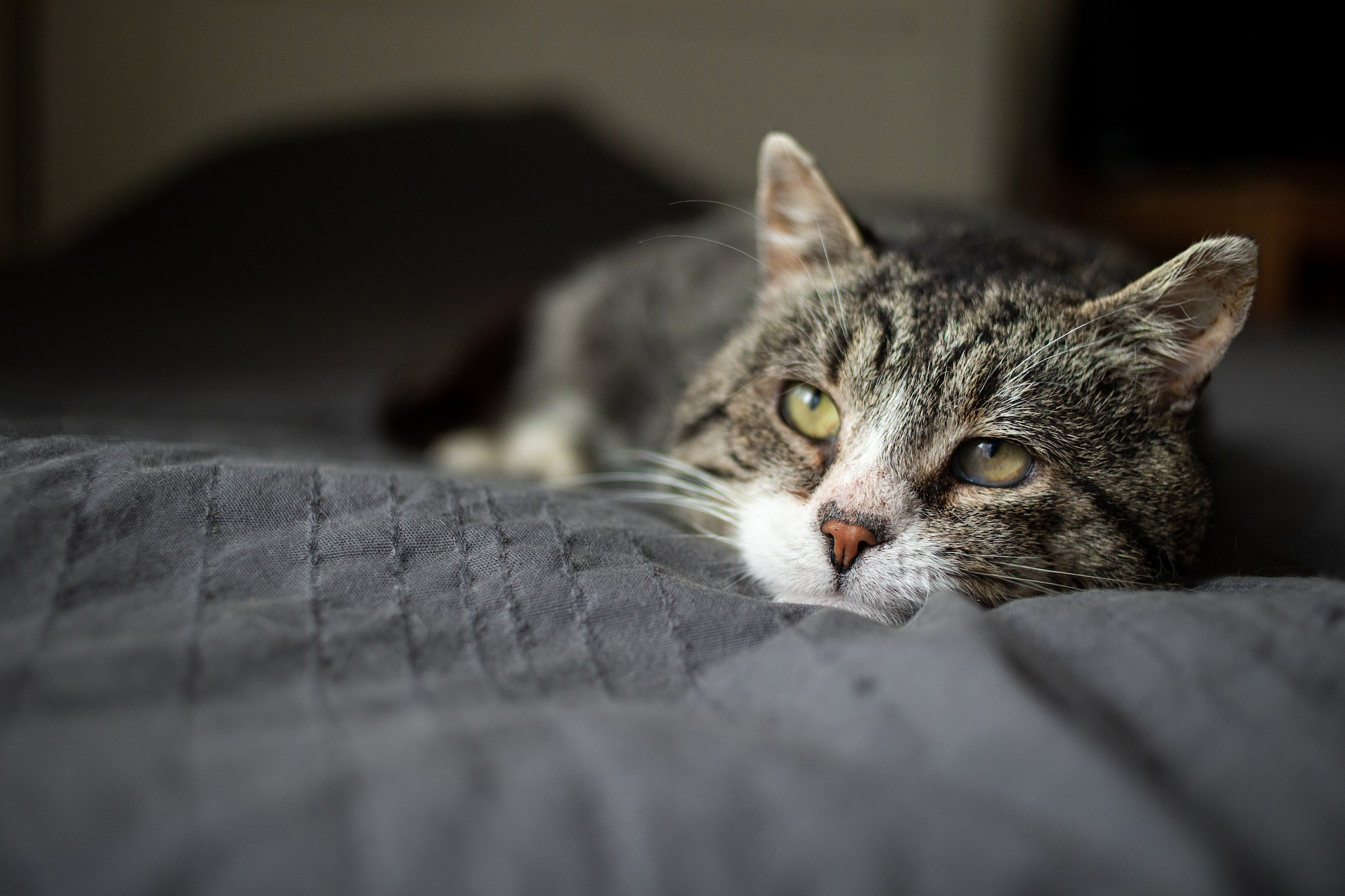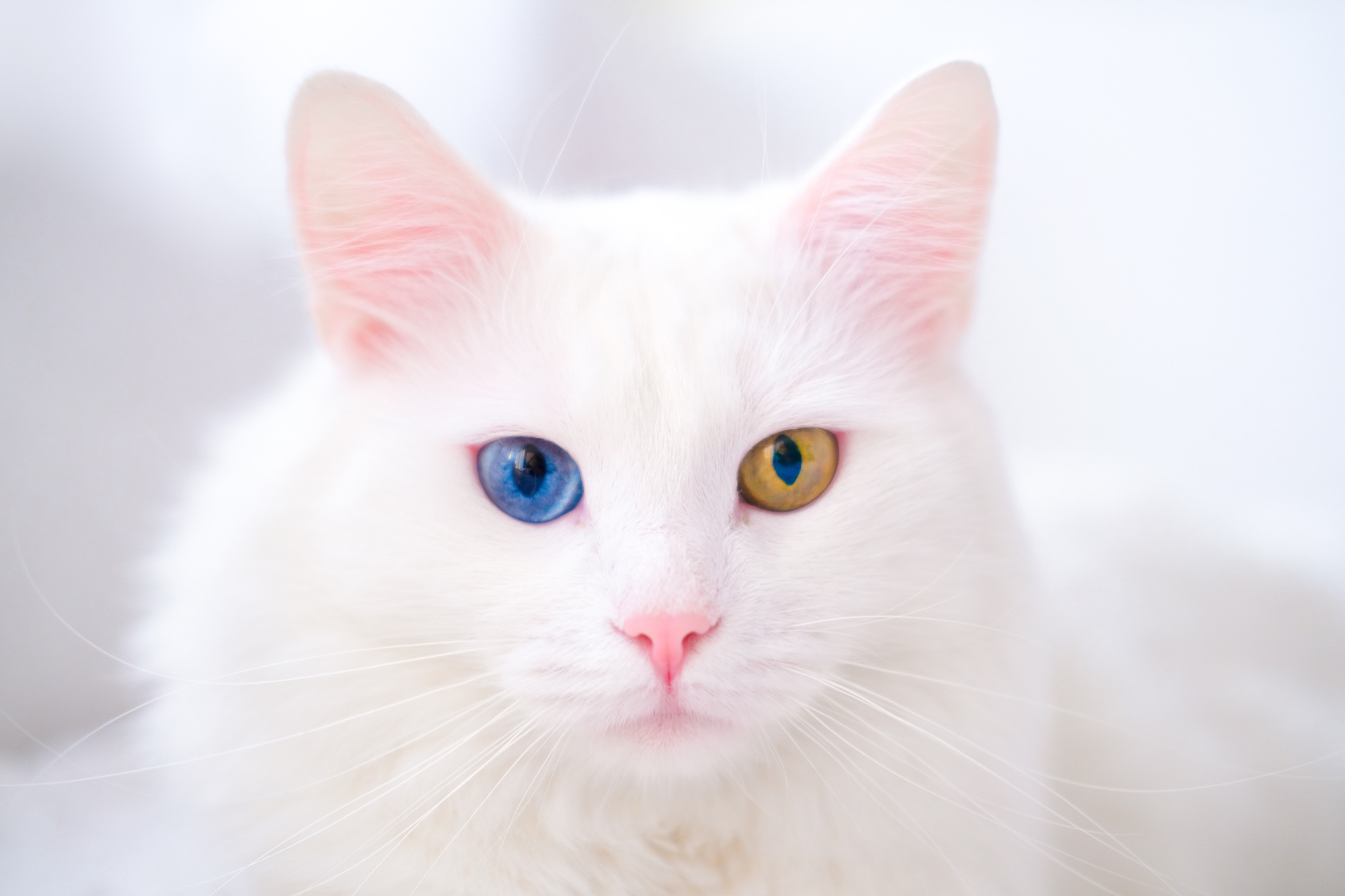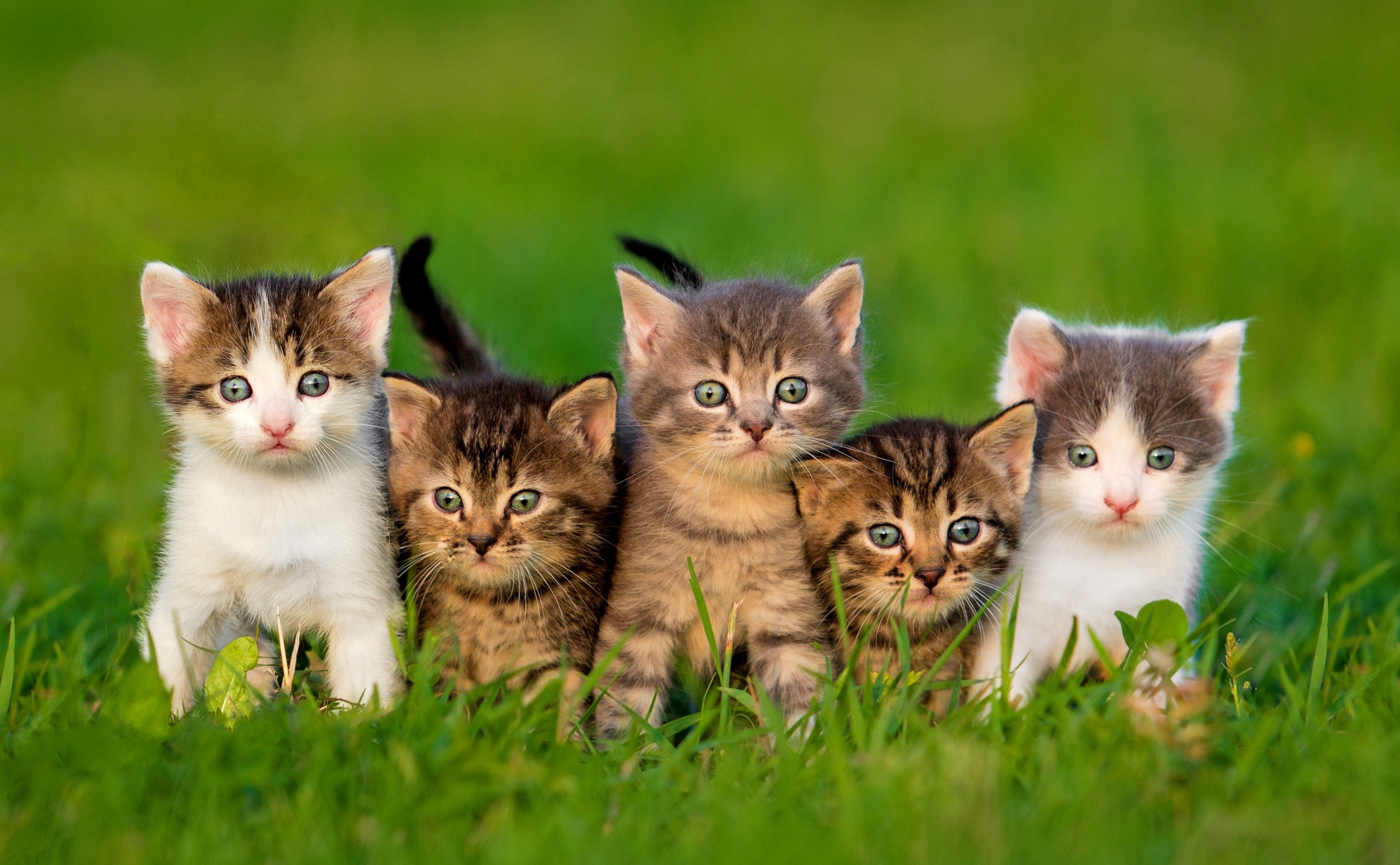
Cats, with their enigmatic charm and playful demeanor, have captivated humans for centuries. Whether you’re a seasoned cat parent or a curious cat admirer, there’s always something new to discover about these intriguing creatures. Here are 50 fascinating cat facts that will stimulate your curiosity and deepen your appreciation for these extraordinary animals.
Cat Years Explained
The first year of a cat’s life equates to around 15 human years. The second year is about nine human years, and every year thereafter is approximately four human years. This fascinating cat fact helps us better understand the age and life stage of our feline friends.
Cats: Masters of Night Vision
Cats possess exceptional night vision, allowing them to see clearly in nearly total darkness. This is due to an additional layer of eye tissue, the tapetum lucidum, which enhances a cat’s night vision by reflecting light back through the retina.
The Function of Cat Whiskers
A cat’s whiskers are not merely decorative. They serve as navigational aids. The length of a cat’s whiskers is generally about the same as its body width, helping cats gauge whether they can fit through narrow spaces.
Cats: The Sleep Connoisseurs
Cats are renowned for their extensive sleep patterns, snoozing for an impressive 12 to 16 hours daily! This means cats spend approximately 70% of their lives in slumber. Despite their reputation for laziness, cats are incredibly alert when awake and spend considerable time hunting.
Unique Nose Prints in Cats
Just like human fingerprints, each cat’s nose print is distinctive, featuring a unique pattern of ridges and bumps. This could potentially be used for identification, although getting a cat to cooperate might be a challenge!
Cats: The Survival Experts
Cats possess an incredible survival instinct known as the “righting reflex.” This enables cats to twist their bodies mid-air and land on their feet if they fall from a height. This reflex begins to develop when kittens are just three weeks old.
Cats and Their Ancient Egyptian Connection
Cats were revered in ancient Egypt, with depictions in tomb paintings dating back to as early as 2750 BC. Even accidental harm to a cat was considered a serious crime.
Cats’ Sensitivity to Change
Cats are highly sensitive to changes in their environment and routine, which can often lead to stress. Adjustments such as moving to a new home or introducing new pets may require a period of adaptation for cats.

Lactose Intolerance in Cats
Contrary to popular belief, many cats are lactose intolerant. After weaning, cats cease producing the enzyme that allows them to digest lactose, so feeding cats cow’s milk can often lead to digestive issues.
Cats in the USA
In the USA, cats are more popular pets than dogs, with approximately 88 million pet cats compared to 74 million dogs.
The Complexity of a Cat’s Brain
In terms of structural complexity, a cat’s brain is 90% similar to a human’s brain. Cats and humans have nearly identical sections of the brain that control emotions.
Cats and Hunting
Despite their reputation as proficient hunters, studies have shown that feral cats catch less than one prey item for every 10 hours of hunting. Surprisingly, even well-fed domestic cats may engage in hunting behavior due to their natural instincts rather than hunger.
Cats and Music
Research suggests that cats enjoy music that’s composed specifically for them, mimicking the tempo and frequency range they use to communicate. There’s even a genre of music called “cat music”!
Cats: The Crepuscular Creatures
Contrary to popular belief, cats are not nocturnal. They are, in fact, crepuscular, which means they are most active during the dawn and dusk.
Hydration in Cats
Cats don’t have a strong thirst drive compared to dogs. They evolved from desert-dwelling wild cats who got most of their water from their prey. This is why it’s crucial to ensure cats receive enough hydration from their diet.
Cats: The Record-breaking Runners
The fastest breed of domestic cat is the Egyptian Mau, which can reach speeds of up to 30 mph (48 kph). That’s faster than Usain Bolt!

Cats and Their Incredible Falls
The highest recorded fall survived by a cat is a staggering 32 stories. A cat named Sabrina fell from a window in a New York apartment building and survived with just a chipped tooth and a collapsed lung.
The Mystery of Cats’ Purring
The reason why cats purr remains a mystery. Most veterinarians believe that it’s a way for cats to soothe themselves. Cats also purr when they’re content, but also when they’re sick, in pain, or nearing death.
International Cat Day
International Cat Day is celebrated worldwide on August 8th to honor our feline friends.
Cats: The Fussy Eaters
Cats are renowned for being picky eaters. This is because they have fewer taste buds than humans and are often more driven by smell than taste.
The Smallest and Largest Cat Breeds
The smallest breed of cat is the Singapura, with females weighing as little as 4 pounds, while males can weigh up to 8 pounds. On the other end of the spectrum, the largest domesticated cat breed is the Maine Coon. Males can weigh up to 18 pounds, and females can weigh up to 16 pounds. The longest Maine Coon on record measured 48.5 inches.
Cats’ Lifespan
With proper care, indoor cats live on average 13 to 17 years. However, many cats have been known to live into their early 20s, and the oldest recorded cat lived to be an astounding 38 years old.
Cats and Dreams
Just like humans, cats go through different stages of sleep, including REM sleep, which is when dreaming occurs. So, yes, your cat likely dreams!
Cats and Superstitions
In some cultures, cats are considered good luck. For example, in Japanese folklore, the “maneki-neko” or “beckoning cat” is a common talisman believed to bring good fortune to its owner.
Cats and Love
Contrary to some beliefs, cats are capable of forming strong bonds with their human companions. A slow blink from a cat is like a human kiss—it’s their way of showing affection and trust.
Cats and Their Unique Scent Markers
Cats have scent glands along their tail, forehead, lips, chin, and the underside of their front paws. They use these glands to mark their territory, rubbing against objects and people to leave their unique scent.
Cats and Their Love for Boxes
Cats love to squeeze into boxes and other small spaces because it helps them feel protected and safe. It’s an instinctual behavior for them.
Cats and Heat
Cats can withstand higher temperatures than humans. This is because their ancestors were desert-dwelling animals.
Cats and Grooming
Cats spend a significant part of their day grooming themselves. This not only keeps them clean but also helps them to relax.
Rare Cat Breeds
Some cat breeds are incredibly rare. For instance, the Sokoke is a breed from Kenya that was only discovered in the 1970s.
The Importance of a Cat’s Tail
A cat’s tail is an essential tool for balance and is used as a form of communication. A straight-up tail signifies happiness, while a bushy tail can indicate fear or excitement.
Paw Preference in Cats
Just like humans, cats can be right or left-handed! Most female cats prefer to use their right paw, while males usually prefer their left.
Cats and Their Superior Senses
A cat’s hearing is superior to that of humans and dogs. They can detect frequencies from about 48 Hz to 85 kHz, a range of about 10.5 octaves, while humans and dogs can hear about 9 octaves.
Cats and Their Taste Preferences
Unlike dogs, cats are usually indifferent to sweet flavors. This is because they have a mutation in a key taste receptor that prevents them from tasting sweetness.
Celebrity Cats
One of the richest cats in the world was Blackie, who inherited 15 million pounds from his wealthy British owner in the late 1980s.
Feline Fertility
A single pair of cats and their kittens can produce as many as 420,000 kittens in just seven years. That’s why spaying and neutering are so important!
Hypoallergenic Cats
While no cat can be 100% hypoallergenic, certain breeds like the Siberian and the Balinese, which produce fewer allergenic proteins, can be more tolerable for individuals with cat allergies.
The Oldest Cat Breed
Some believe the Turkish Van is the oldest cat breed, dating back to the region of Mount Ararat, which was the site of Noah’s Ark landing.

Water-Loving Cats
While most cats despise water, the Turkish Van breed actually enjoys swimming. These cats have a unique texture to their coat which makes them more water-resistant.
A Longer Life for Cats
Neutered male cats live an average of 62% longer than unneutered ones, while spayed female cats live an average of 39% longer than unspayed ones.
The Most Prolific Mother Cat
The most prolific mother cat in the world, according to Guinness World Records, was a Texas feline named Dusty who had more than 420 kittens in her lifetime.
That’s a Lot of Kittens
On average, a cat can have one to nine kittens in a litter. The largest known litter, however, produced 19 kittens, 15 of which survived.

Cats and Their Flexible Bodies
Cats have a unique skeletal structure that allows them to fit through any opening the size of their head. Their collarbones don’t connect to other bones and are buried in their shoulder muscles, allowing them to squeeze through tight spaces.
Cats and Their Love for High Places
Cats love to climb and view their surroundings from high places. This behavior can be traced back to their wild ancestors who used to perch on trees to spot prey and avoid predators.
Cats and Their Communication Skills
Cats communicate using a variety of vocalizations (meowing, purring, hissing) as well as body language. In fact, adult cats only meow to communicate with humans, not with other cats.
Cats and Their Hunting Skills
Cats are born with a hunting and chasing instinct. Even well-fed pet cats may engage in hunting behavior, catching and playing with toys, insects, and other small animals.
Cats and Their Eating Habits
Cats are obligate carnivores, which means they need a source of meat in their diet to survive. They lack certain metabolic pathways and cannot produce enough taurine, an essential amino acid, which is found in meat.
Cats and Their Drinking Technique
Cats have a unique drinking technique. They lap up the liquid by flicking their tongues at a speed of four times per second, creating a column of milk or water that they then gulp down.
Cats and Their Healing Powers
A cat’s purr is not just relaxing; it also has healing properties. Cats purr at a frequency between 25 and 150 Hertz, which is the frequency at which muscles and bones repair themselves.
Cats and Their Nine Lives
The saying that a cat has nine lives comes from their ability to jump and land from high places. They use their righting reflex to twist their bodies and land on their feet.
Conclusion
While cats can often appear mysterious, there is no denying their incredible capacity for love and loyalty. Through multiple centuries of living alongside us, they have not only become our beloved family members, but also shaped culture and sparked imagination. We hope that reading this post has been an enjoyable journey for all cat enthusiasts out there – or maybe even gained you a newfound appreciation for these fascinating creatures! It’s time to close the book and cherish each moment spent with our feline friends, recognizing them not just as cute pets, but as respectful members of our household. May we always acknowledge and recognize the remarkable beauty that cats bring to each of our lives!
Frequently Asked Questions (FAQs)
How old is a cat in human years?
The first year of a cat’s life is equivalent to around 15 human years. The second year is about nine human years, and every year thereafter is approximately four human years.
Can cats see in the dark?
Yes, cats have exceptional night vision due to an additional layer of eye tissue, the tapetum lucidum, which enhances their night vision by reflecting light back through the retina.
How long do cats sleep?
Cats are renowned for their extensive sleep patterns, snoozing for an impressive 12 to 16 hours daily! This means cats spend approximately 70% of their lives in slumber.
Are cats lactose intolerant?
Contrary to popular belief, many cats are lactose intolerant. After weaning, cats cease producing the enzyme that allows them to digest lactose, so feeding cats cow’s milk can often lead to digestive issues.
How long can cats live?
With proper care, indoor cats live on average 13 to 17 years. However, many cats have been known to live into their early 20s, and the oldest recorded cat lived to be an astounding 38 years old.
Was this page helpful?
Our commitment to delivering trustworthy and engaging content is at the heart of what we do. Each fact on our site is contributed by real users like you, bringing a wealth of diverse insights and information. To ensure the highest standards of accuracy and reliability, our dedicated editors meticulously review each submission. This process guarantees that the facts we share are not only fascinating but also credible. Trust in our commitment to quality and authenticity as you explore and learn with us.
